Proof:
We do this again by induction on the syntax of regular expressions:

which will reject everything (it has got no final states) and hence
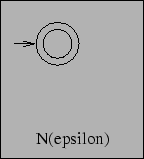
This automaton accepts the empty word but rejects everything else, hence:

This automaton only accepts the word x, hence:
We merge the diagrams for ![]() and
and ![]() into one:
into one:
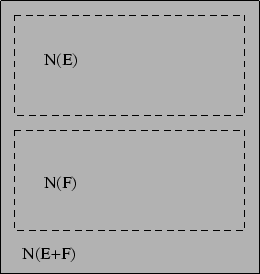
I.e. given
Just thinking of the game with markers you should be able to convince yourself that
Moreover to show that
Now putting everything together:
We want to put
the two automata ![]() and
and ![]() in series. We do this by
connecting the final states of
in series. We do this by
connecting the final states of ![]() with the initial states
of
with the initial states
of ![]() in a way explained below.
in a way explained below.
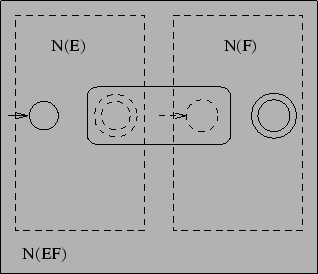
In this diagram I only depicted one initial and one final state of each of the automata although they may be several of them.
Here is how we construct ![]() from
from ![]() and
and ![]() :
:
I hope that you are able to convince yourself that
We construct ![]() from
from ![]() by merging initial and final
states of
by merging initial and final
states of ![]() in a way similar to the previous construction and
we add a new state
in a way similar to the previous construction and
we add a new state ![]() which is initial and final.
which is initial and final.
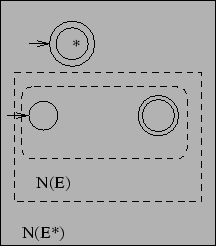
Given
We claim that
I.e. using brackets does not change anything.
![]()
As an example we construct
![]() . First we
construct
. First we
construct
![]() :
:
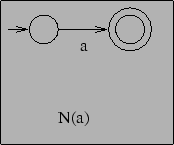
Now we have to apply the ![]() -construction and we obtain:
-construction and we obtain:
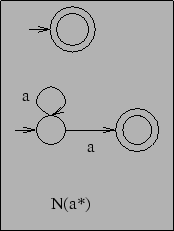
![]() is just the same and we get
is just the same and we get
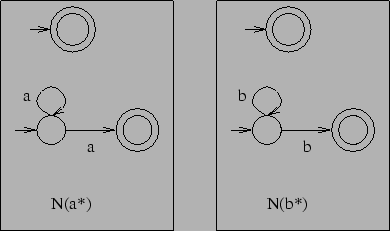
and now we have to serialize the two automata and we get:
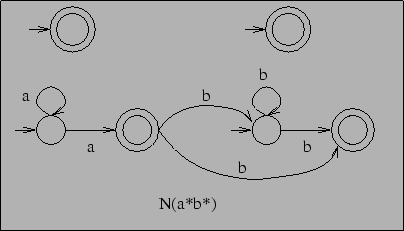
Now, you may observe that this automaton, though correct, is unnecessary complicated, since we could have just used
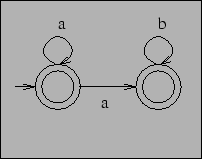
However, we shall not be concerned with minimality at the moment.